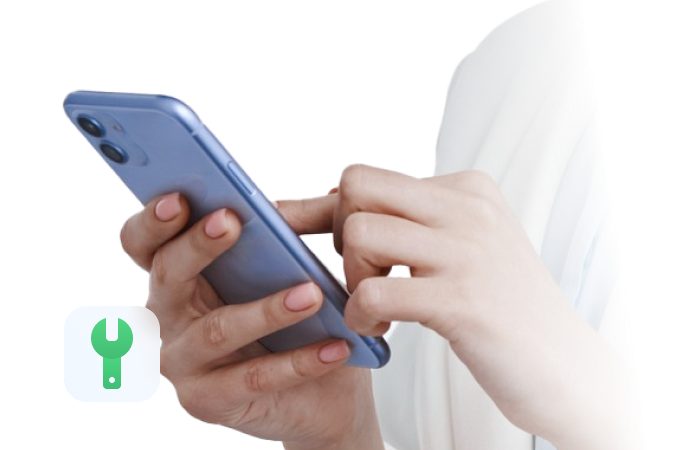
How to Fix the iPhone Stuck in Landscape Mode Issue
Aug 20, 2025 • Filed to: Phone Repair Solutions • Proven solutions
"Help! My iPhone is stuck in landscape mode and won't rotate back to portrait. I've tried everything - restarting, force closing apps, even doing a soft reset. Nothing's working! What can I do to fix this?"
Does this sound familiar? If you've ever found yourself wildly turning your iPhone or iPad around, trying hard to get the screen to flip back to vertical orientation, you're not alone. The annoying "iPhone stuck in horizontal mode" problem is a common issue for many iOS users.
Whether you're trying to read an important email, look at social media, or just use your home screen, being locked in horizontal mode can really disrupt your mobile experience.

But don't worry - there's hope! In this detailed guide, we'll look at why your iPhone or iPad might be stubbornly staying in horizontal mode and guide you through various solutions to get your device rotating properly again. From quick fixes like checking your orientation lock to more advanced techniques using tools like Dr.Fone, we've got you covered.
Part 1: Why is iPhone Stuck in Landscape Mode?
Before we look at how to fix this, let's first understand why your iPhone or iPad might be stuck in landscape mode. Let’s learn about a few common reasons:
- Wrong Display Settings: You might have accidentally turned on the orientation lock, which stops the screen from rotating.
- Software Problems: Sometimes, small errors in iOS can cause the rotation feature to not work correctly.
- Troublesome Apps: Some apps can mess up your device's ability to change orientations.
- Old iOS Version: Using an older version of iOS can cause different problems, including orientation issues.
- Hardware Problems: Very rarely, if the device's accelerometer or gyroscope is damaged, it can affect the screen rotation.
- Temporary Software Issues: Sometimes, small software problems can make the screen stay in landscape mode.
Knowing these possible reasons can help you fix problems more efficiently and avoid them from happening again.
Part 2: How to Fix the iPhone Stuck in Landscape Mode Issue
Now that we know the possible reasons behind this issue, let's explore various solutions to get your iPhone or iPad screen rotating correctly again.
Fix 1: Use Dr.Fone to Fix and Repair iOS System Issues
For fixing tough iOS issues such as a screen that won't rotate out of landscape mode, Dr.Fone - System Repair (iOS) is usually the best and most thorough solution. This handy tool is made to handle many iOS system problems without losing any data.
Here's why Dr.Fone stands out as the best fix compared to others:
- User-Friendly Interface: Even if you're not tech-savvy, Dr.Fone's intuitive design makes it easy to use.
- High Success Rate: It can resolve many iOS issues that other methods can't fix.
- No Data Loss: Unlike factory resets or iTunes restores, Dr.Fone preserves your data during the repair process.
- Versatility: It can fix various iOS issues beyond just orientation problems.
- Time-Saving: Instead of trying multiple fixes, Dr.Fone often solves the problem in one go.

Dr.Fone - System Repair (iOS)
Repair iOS System Errors Without data loss.
- Only fix your iOS to normal, no data loss at all.
- Fix various iOS system issues stuck in recovery mode, white Apple logo, black screen, looping on start, etc.
- Downgrade iOS without iTunes at all.
- Work for all iPhone/iPad/iPod Touch, running on all iOS versions
To use Dr.Fone to fix your iPhone stuck in landscape mode:
Step 1: Launch the Dr.Fone tool on your PC. Click "Toolbox" at the top-left of the screen. Choose "System Repair" from the options shown. Now, use a USB lightning cable. Connect your iPhone to your PC with the help of it.
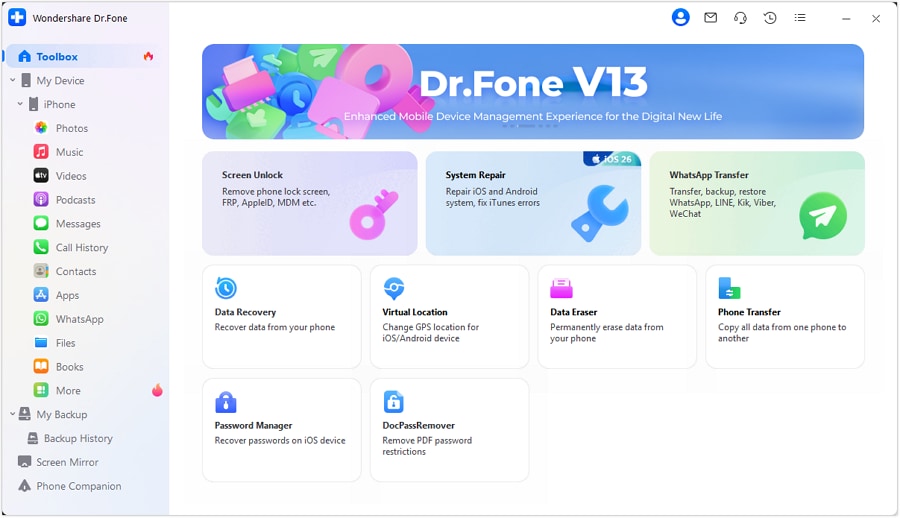
Step 2: Click "iPhone" when asked what type of device you have.
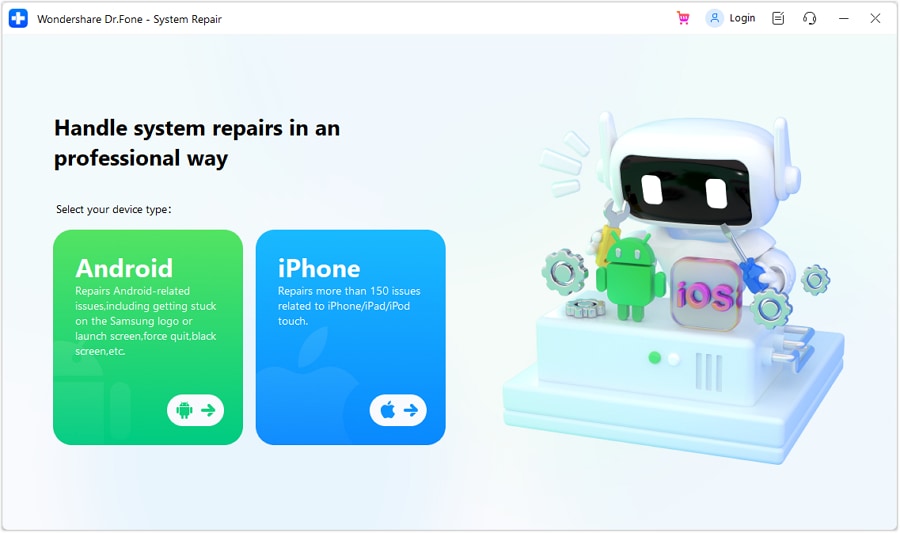
Step 3: You will see various options in the Dr.Fone interface. Choose ""iOS Repair"".
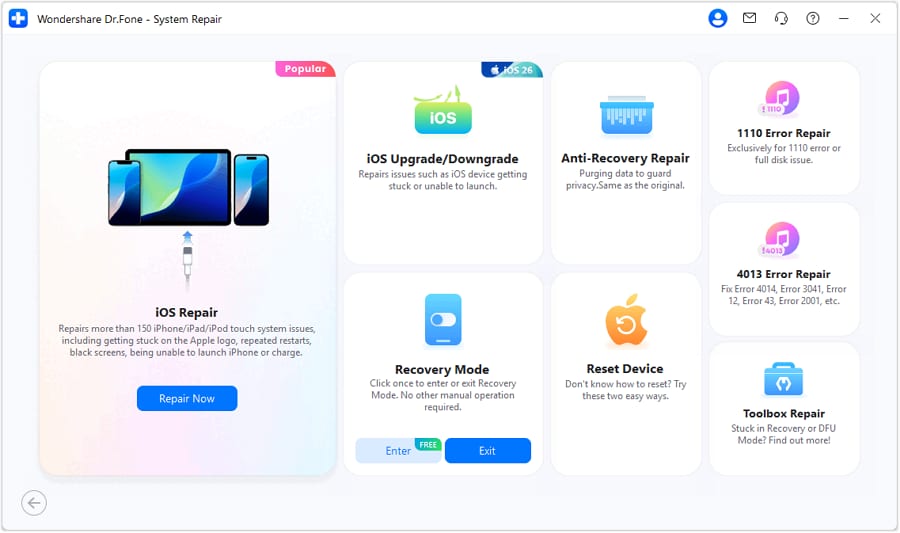
Step 4: Pick "Standard Repair" to keep your data safe.
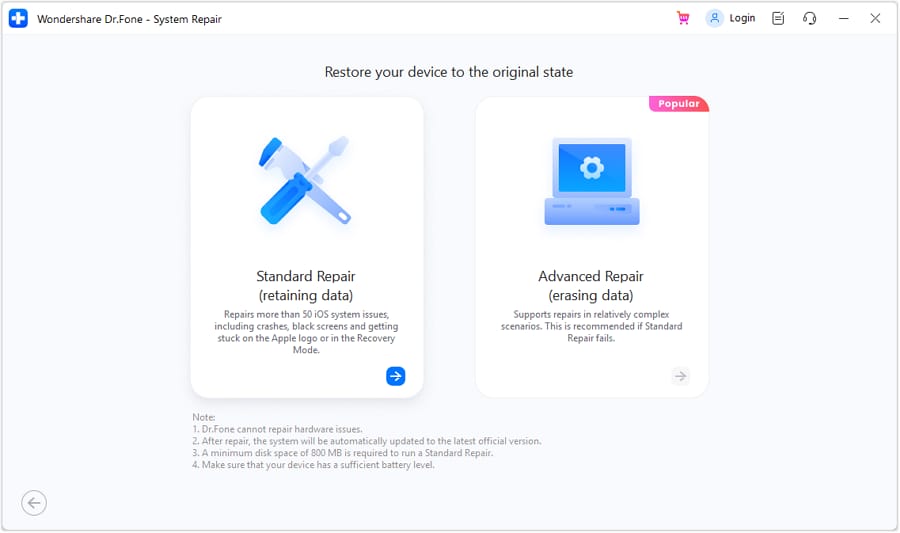
Step 5: Follow the on-screen steps to put your device in Recovery Mode. Click "Enter Recovery Mode" when done.
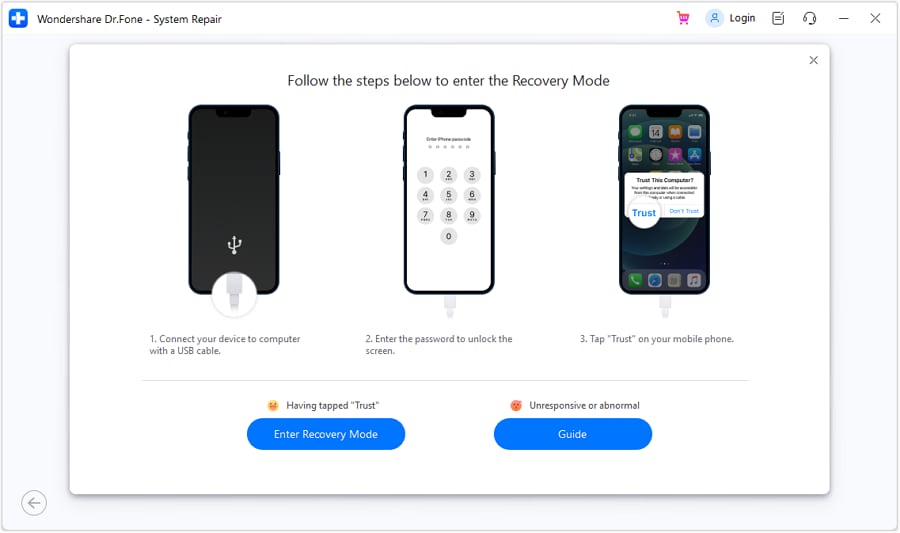
Step 6: The tool will find the right software for your device. Click "Download" next to the software version you want. Wait for the download to finish and be checked.
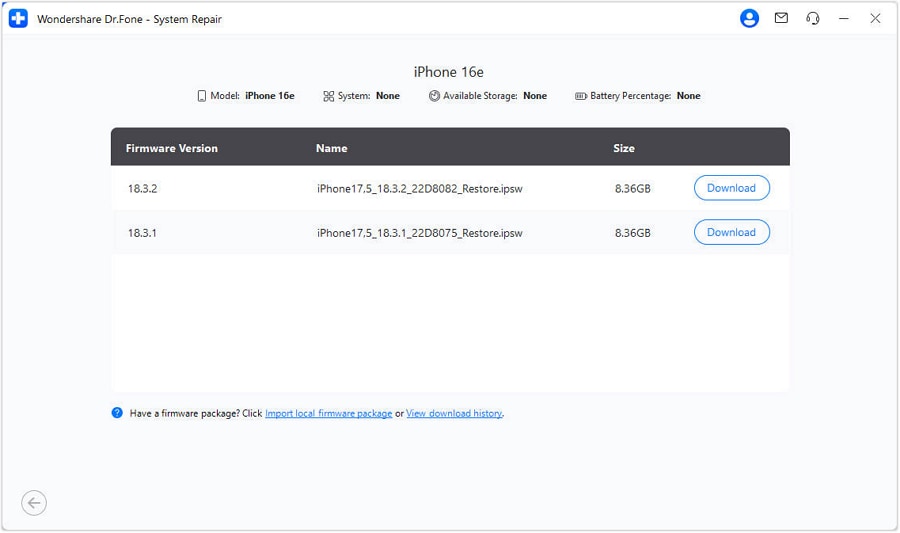
Step 7: Click "Repair Now" to start fixing your device. Keep your device connected and wait until the progress bar is full.
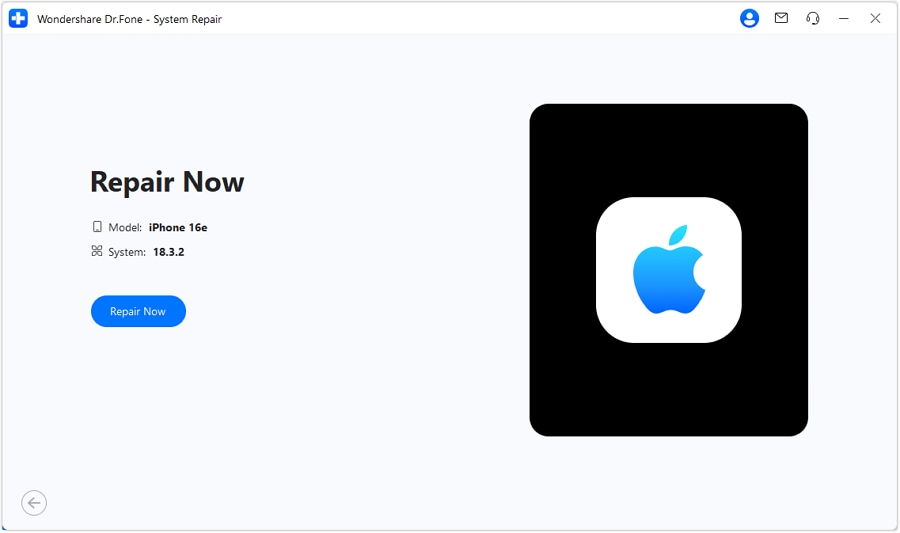
Step 8: When it's done, click "Done" to finish up.
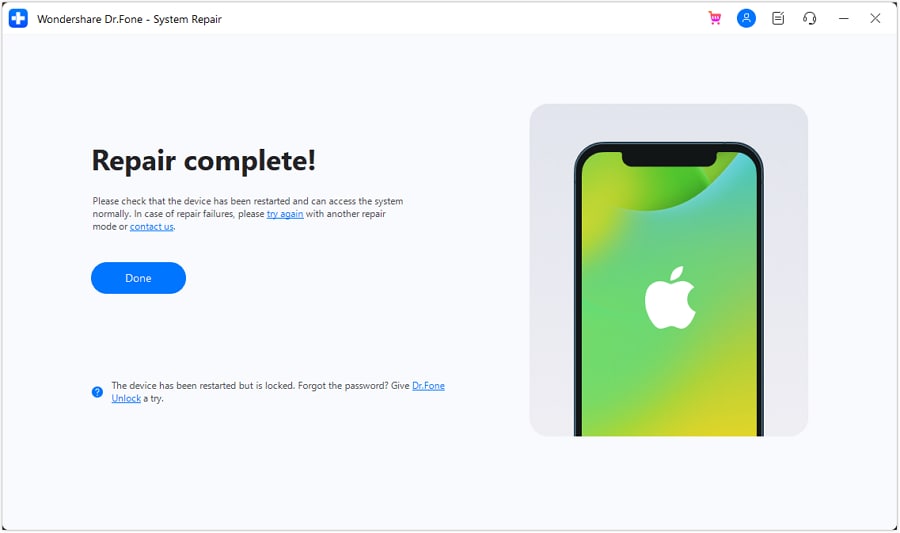
While Dr.Fone is often the most reliable solution, let's explore some other fixes you can try if you prefer to troubleshoot on your own.
Fix 2: Turn Off the Orientation Lock on iPhone
Sometimes, the easiest fix works best. Your iPhone could be stuck on its side because the feature that keeps it from rotating is turned on by mistake.
Here's how to see if it's on and how to turn it off:
Step 1: Pull down from the top-right corner of your screen to open the Control Center.

Step 2: Find the lock symbol with a circle and arrow around it. If it's lit up, tap it to switch off the rotation lock. Close the Control Center and try turning your phone to see if it works right again.
Fix 3: Delete or Update the Apps that Make iPhone Stuck in Landscape Mode
Sometimes, certain applications might cause issues with how your device changes its screen direction. If you see this happening only with specific apps, follow these steps:
Update the troublesome apps:
Step 1: Go to the App Store. Click on your profile icon

Step 2: Look down to find any updates available. Update the apps that are causing problems
If updating the apps doesn't solve the problem, try removing the app and then installing it again:
Step 1: Tap and hold the app icon on your home screen. Select "Remove App"

Step 2: Choose "Delete App". Go to the App Store and reinstall the app
If the problem persists, consider contacting the app developer or using an alternative app.
Fix 4: Update the iOS System to the Newest One
It's important to keep your iPhone's operating system updated to ensure it runs well and doesn't have problems. Here's a simple guide on how to update your iPhone:
Step 1: Make sure your iPhone is connected to a reliable Wi-Fi network and plugged into a charger. Open the Settings app, then go to General, and select Software Update.
Step 2: If there's a new update, tap on "Download and Install." You might need to enter your phone's passcode.
Step 3: Accept the terms and conditions. Let the update download and install. Your phone will restart once it's finished.
Always remember to back up your phone before starting the update to avoid losing any important information.
Fix 5: Factory Reset iPhone
If none of the solutions mentioned earlier help, you may have to do a factory reset. This is a final option because it will delete all information from your device. Here's how to perform it:
Step 1: First, make a backup of your iPhone using iCloud or iTunes. Then, go to Settings, then General, and finally Reset. Select "Erase All Content and Settings." If asked, enter your passcode.

Step 2: Confirm by tapping "Erase iPhone." Wait until the process finishes. Your iPhone will restart and act like a new device. When setting it up again, choose to restore your data from the backup you made.
Fix 6: Restore iPhone From iTunes
Another option is to restore your iPhone using iTunes:
Step 1: Connect your iPhone to your computer and open iTunes (or Finder on macOS Catalina and later). Select your device when it appears in iTunes. Click on "Restore iPhone" in the Summary panel.
Step 2: Click "Restore" again to confirm. Wait for the process to complete. Your iPhone will restart. Set up your iPhone and restore from a backup if desired.
Part 3: Tips to Avoid iPhone Stuck in Landscape Mode Problem
Here are some tips to help you avoid the iPhone stuck in landscape mode issue in the future:
- Don't use your iPhone in very hot or cold places, as this can cause it to work poorly.
- Use a case to protect your iPhone and avoid damaging parts inside that could cause problems with screen orientation.
- Close apps you're not using to avoid software issues.
- Restart your iPhone once a week to fix small problems.
- Handle your iPhone carefully to avoid damaging parts like the sensor that detects screen orientation.
- Update your apps regularly, as updates often fix bugs, including those that affect screen orientation.
- Don't have too many apps on your iPhone or let it run out of storage space, as this can cause performance problems.
- Clean your iPhone to remove dust and dirt that might interfere with its normal operation.
Conclusion
Dealing with an iPhone or iPad stuck in landscape mode can be incredibly frustrating, but as we've seen, there are numerous ways to tackle this issue. From simple fixes like checking your orientation lock to more comprehensive solutions like using Dr.Fone, you now have a toolkit of methods to try when faced with this problem.
Remember, while manual fixes can often resolve the issue, tools like Dr.Fone offer a more reliable and hassle-free solution, especially for persistent problems. By combining these fixes with preventive measures, you can ensure smoother, rotation-ready performance from your iOS device in the future.
Don't let a stubborn screen orientation hold you back – with these tips and tricks, you're well-equipped to keep your iPhone or iPad rotating exactly as it should.

















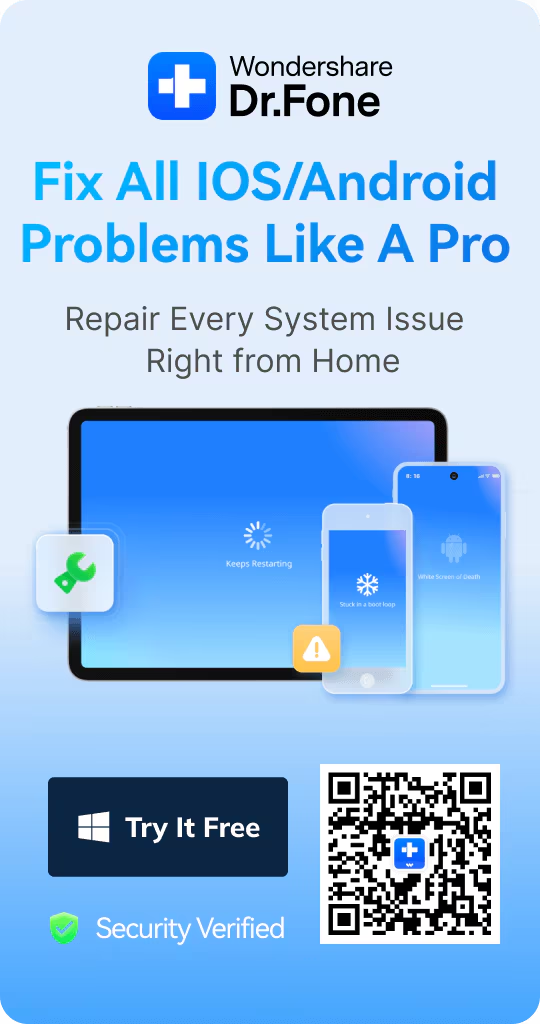

Julia Becker
chief Editor
Generally rated4.5(105participated)